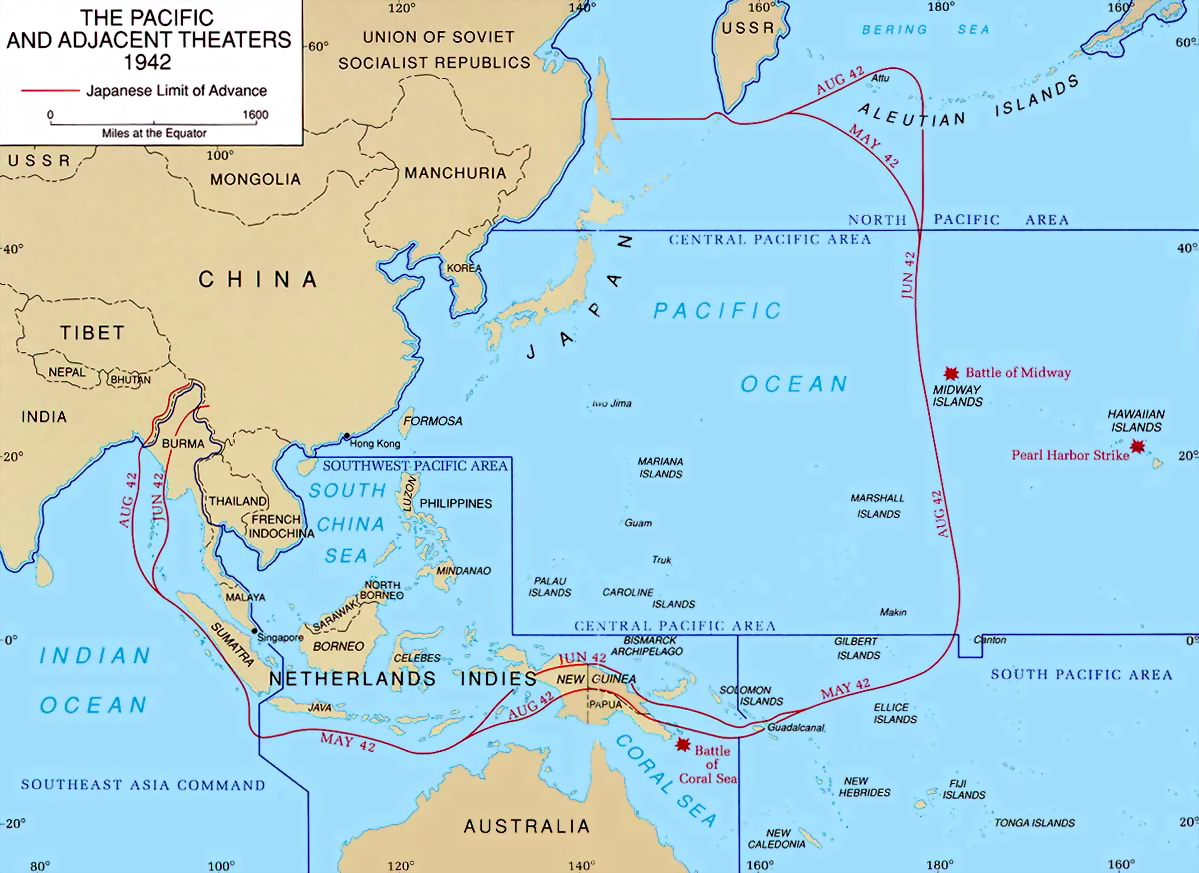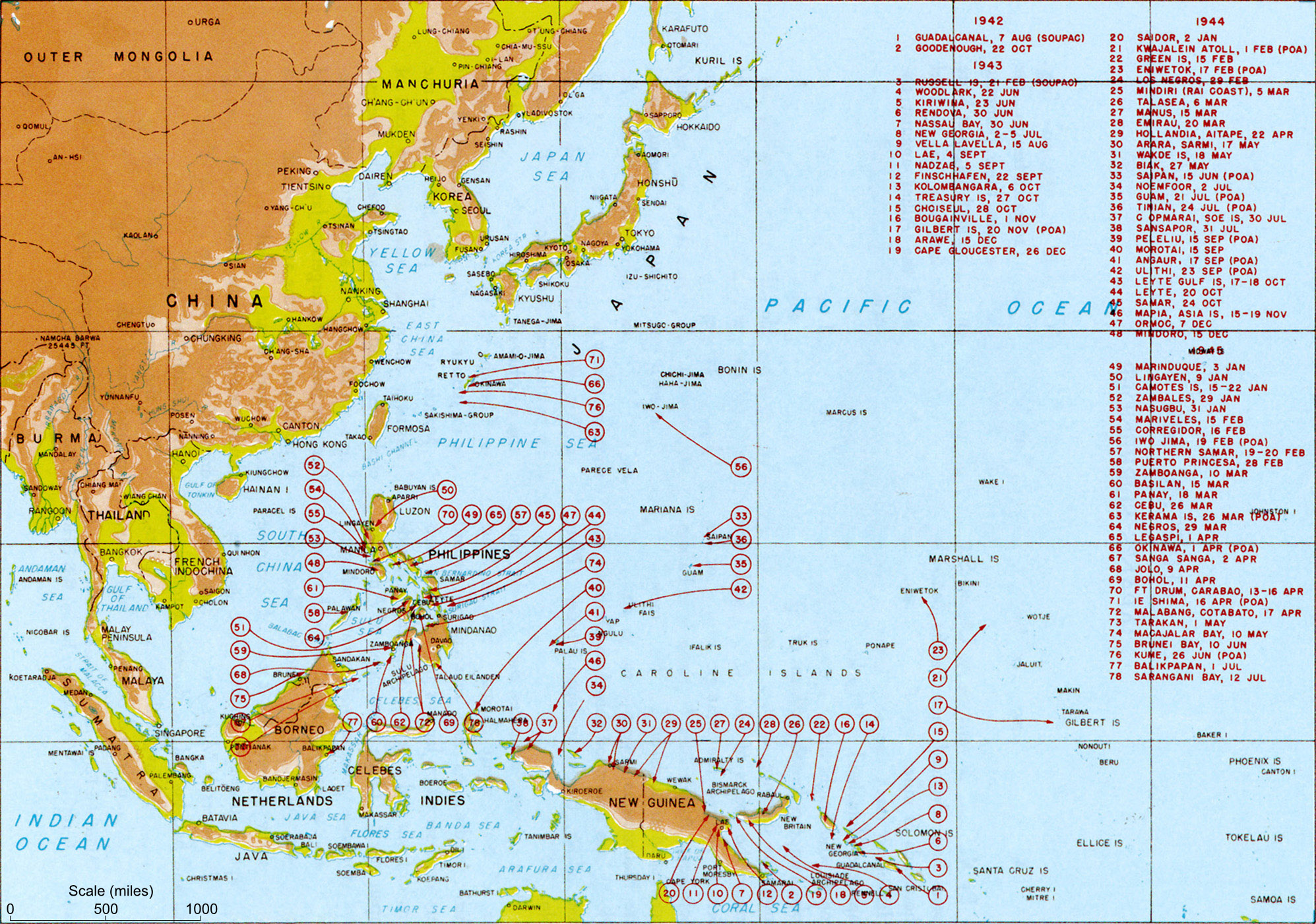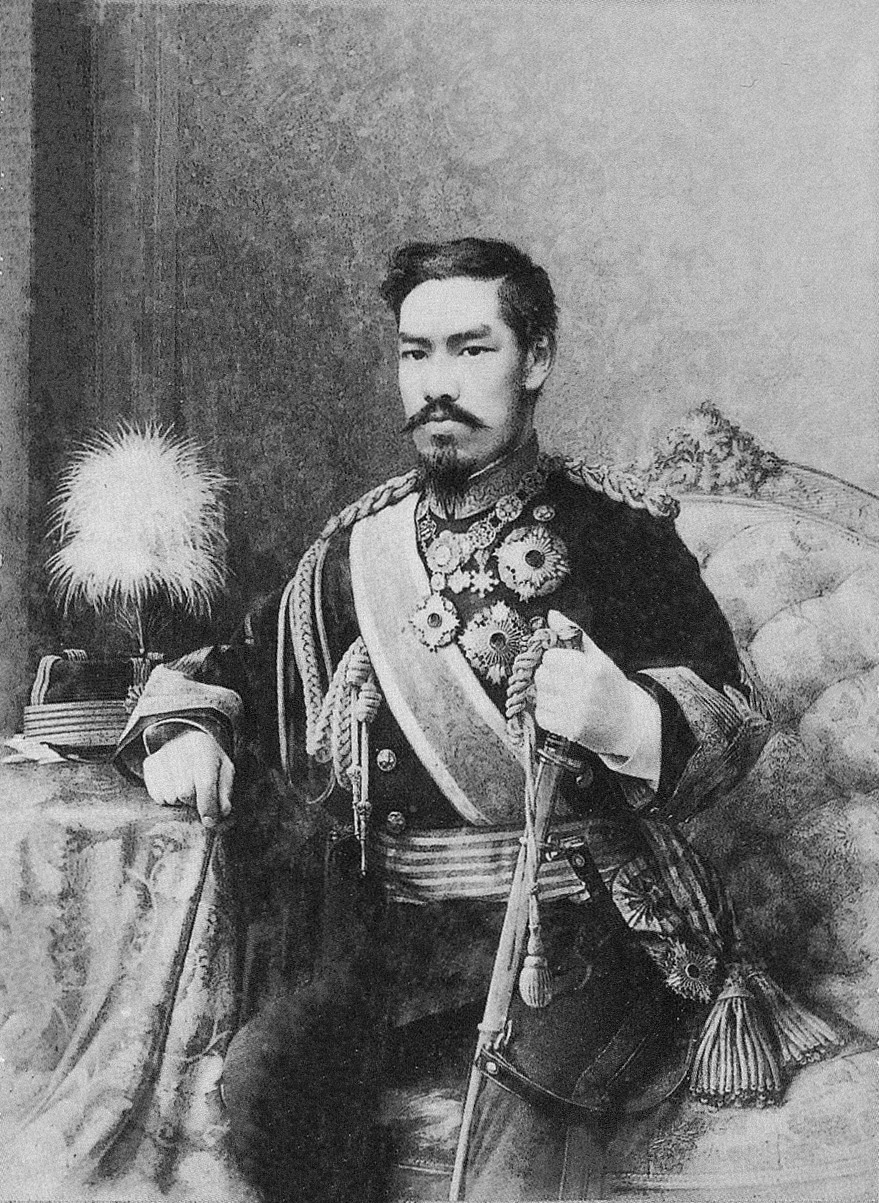|
Syonan
, officially , was the name for Singapore when it was occupied and ruled by the Empire of Japan, following the fall and surrender of British military forces on 15 February 1942 during World War II. The Japanese military forces occupied Singapore after defeating the combined British, Indian, Australian, Malayan and the Straits Settlements garrison in the Battle of Singapore within 7 days. The occupation was to become a major turning point in the histories of several nations, including those of Japan, Britain, and Singapore. Singapore was renamed Syonan-to, meaning "Light of the South Island" and was also included as part of the . Singapore was officially returned to British colonial rule on 12 September 1945, following the formal signing of the surrender at the Municipal Building, currently known as City Hall. After the return of the British, there was growing political sentiments amongst the local populace in tandem with the rise of anti-colonial and nationalist fervor, as ... [...More Info...] [...Related Items...] OR: [Wikipedia] [Google] [Baidu] |
Bombing Of Singapore (1944–1945)
The Bombing of Singapore (1944–1945) was a military campaign conducted by the Allies of World War II, Allied air forces during World War II. United States Army Air Forces (USAAF) long-range bomber units conducted 11 air raids on Japanese-occupied Singapore between November 1944 and March 1945. Most of these raids targeted the island's naval base and dockyard facilities, and minelaying missions were conducted in nearby waters. After the American bombers were redeployed, the British Royal Air Force assumed responsibility for minelaying operations near Singapore and these continued until 24 May 1945. The raids had mixed results. While significant damage was inflicted on Singapore's important naval base and commercial port, some raids on these targets were not successful and other attacks on oil storage facilities on islands near Singapore were ineffective. The minelaying campaign disrupted Japanese shipping in the Singapore area and resulted in the loss of three vessels and d ... [...More Info...] [...Related Items...] OR: [Wikipedia] [Google] [Baidu] |
Battle Of Singapore
The fall of Singapore, also known as the Battle of Singapore, took place in the South–East Asian theatre of the Pacific War. The Empire of Japan captured the British stronghold of Singapore, with fighting lasting from 8 to 15 February 1942. Singapore was the foremost British military base and economic port in South–East Asia and had been of great importance to British interwar defence strategy. The capture of Singapore resulted in the largest British surrender in history. Before the battle, Japanese General Tomoyuki Yamashita had advanced with approximately 30,000 men down the Malayan Peninsula in the Malayan campaign. The British erroneously considered the jungle terrain impassable, leading to a swift Japanese advance as Allied defences were quickly outflanked. The British Lieutenant-General, Arthur Percival, commanded 85,000 Allied troops at Singapore, although many units were under-strength and most units lacked experience. The British outnumbered the Japanese but mu ... [...More Info...] [...Related Items...] OR: [Wikipedia] [Google] [Baidu] |
State Shinto
was Empire of Japan, Imperial Japan's ideological use of the Japanese folk religion and traditions of Shinto. The state exercised control of shrine finances and training regimes for Kannushi, priests to strongly encourage Shinto practices that emphasized the Emperor as a Deity, divine being. The State Shinto ideology emerged at the start of the Meiji era, after government officials defined freedom of religion within the Meiji Constitution. Imperial scholars believed Shinto reflected the historical fact of the Emperor's divine origins rather than a religious belief, and argued that it should enjoy a privileged relationship with the Japanese state. The government argued that Shinto was a non-religious moral tradition and patriotic practice, to give the impression that they supported Freedom of religion, religious freedom. Though early Meiji-era attempts to unite Shinto and the state failed, this non-religious concept of ideological Shinto was incorporated into state bureaucracy. S ... [...More Info...] [...Related Items...] OR: [Wikipedia] [Google] [Baidu] |
Shinto
, also called Shintoism, is a religion originating in Japan. Classified as an East Asian religions, East Asian religion by Religious studies, scholars of religion, it is often regarded by its practitioners as Japan's indigenous religion and as a nature religion. Scholars sometimes call its practitioners ''Shintoists'', although adherents rarely use that term themselves. With no central authority in control of Shinto, there is much diversity of belief and practice evident among practitioners. A polytheism, polytheistic and animism, animistic religion, Shinto revolves around supernatural entities called the (神). The are believed to inhabit all things, including forces of nature and prominent landscape locations. The are worshipped at household shrines, family shrines, and Shinto shrine, ''jinja'' public shrines. The latter are staffed by priests, known as , who oversee offerings of food and drink to the specific enshrined at that location. This is done to cultivate harmony ... [...More Info...] [...Related Items...] OR: [Wikipedia] [Google] [Baidu] |
Taoism
Taoism or Daoism (, ) is a diverse philosophical and religious tradition indigenous to China, emphasizing harmony with the Tao ( zh, p=dào, w=tao4). With a range of meaning in Chinese philosophy, translations of Tao include 'way', 'road', 'path', or 'technique', generally understood in the Taoist sense as an enigmatic process of transformation Ultimate reality, ultimately underlying reality. Taoist thought has informed the development of various practices within the Taoist tradition and beyond, including forms of Taoist meditation, meditation, Chinese astrology, astrology, qigong, feng shui, and Neidan, internal alchemy. A common goal of Taoist practice is self-cultivation, a deeper appreciation of the Tao, and more harmonious existence. Taoist ethics vary, but generally emphasize such virtues as ''wu wei, effortless action'', ziran, ''naturalness'', ''pu (Taoism), simplicity'', and the Three Treasures (Taoism), three treasures of compassion, frugality, and humility. The co ... [...More Info...] [...Related Items...] OR: [Wikipedia] [Google] [Baidu] |
Operation Tiderace
Operation Tiderace was the codename of the British plan to retake Singapore following the Japanese surrender in 1945. The liberation force was led by Lord Louis Mountbatten, Supreme Allied Commander of South East Asia Command. Tiderace was initiated in coordination with Operation Zipper, which involved the liberation of Malaya. Background With the Soviet invasion of Manchuria and an American planned invasion of Japan, South East Asia Command were also drawing up plans to invade Malaya, codenamed Operation Zipper. With over 100,000 Allied infantry, the plan was to capture Port Swettenham and Port Dickson, and would involve an airstrike of more than 500 aircraft of the Royal Air Force. The assault was scheduled for 9 September 1945, but was forestalled following the Surrender of Japan on 15 August 1945. Once the lodgement was secure, the Allies would have initiated Operation Mailfist, during which ground forces were to advance south through Malaya and liberate Singapore ... [...More Info...] [...Related Items...] OR: [Wikipedia] [Google] [Baidu] |
Surrender Of Japan
The surrender of the Empire of Japan in World War II was Hirohito surrender broadcast, announced by Emperor Hirohito on 15 August and formally Japanese Instrument of Surrender, signed on 2 September 1945, End of World War II in Asia, ending the war. By the end of July 1945, the Imperial Japanese Navy (IJN) was incapable of conducting major operations and an Operation Downfall, Allied invasion of Japan was imminent. Together with the United Kingdom and Republic of China (1912–49), China, the United States called for the unconditional surrender of Japan in the Potsdam Declaration on 26 July 1945—the alternative being "prompt and utter destruction". While publicly stating their intent to fight on to the bitter end, Japan's leaders (the Supreme War Council (Japan), Supreme Council for the Direction of the War, also known as the "Big Six") were privately making entreaties to the publicly neutral Soviet Union to mediate peace on terms more favorable to the Japanese. While mainta ... [...More Info...] [...Related Items...] OR: [Wikipedia] [Google] [Baidu] |
Pacific War
The Pacific War, sometimes called the Asia–Pacific War or the Pacific Theatre, was the Theater (warfare), theatre of World War II fought between the Empire of Japan and the Allies of World War II, Allies in East Asia, East and Southeast Asia, the Pacific Ocean, Pacific and Indian Oceans, and Oceania. It was geographically the largest theatre of the war, including the Pacific Ocean theater of World War II, Pacific Ocean theatre, the South West Pacific theater of World War II, South West Pacific theatre, the Second Sino-Japanese War, and the brief Soviet–Japanese War, and included some of the Largest naval battle in history, largest naval battles in history. War between Japan and the Republic of China (1912–1949), Republic of China had begun in 1937, with hostilities dating back to Japanese invasion of Manchuria, Japan's invasion of Manchuria in 1931, but the Pacific War is more widely accepted to have started in 1941, when the United States and United Kingdom entered the ... [...More Info...] [...Related Items...] OR: [Wikipedia] [Google] [Baidu] |
Kuniaki Koiso
was a Japanese politician and general who served as prime minister of Japan from 1944 to 1945, during World War II. He previously served as minister of colonial affairs in 1939 and 1940, and as governor-general of Korea from 1942 to 1944. Koiso resigned as premier after the start of the Battle of Okinawa, and following Japan's surrender he was convicted as a Class A war criminal and sentenced to life imprisonment, dying in prison in 1950. Early life Koiso was born on March 22, 1880, in Utsunomiya, Tochigi Prefecture, the first son of chief inspector of police and '' shizoku'' (former samurai) Koiso Susumu. He attended eight different schools, graduating from Yamagata Middle School (today Yamagata Prefectural Yamagata East High School). He was accepted as an officer candidate in 1898. Military career Koiso graduated from the Imperial Japanese Army Academy in 1900 and went on to attend the Army Staff College. Commissioned a 2nd Lieutenant in the 30th Infantry Regiment in J ... [...More Info...] [...Related Items...] OR: [Wikipedia] [Google] [Baidu] |
Hideki Tojo
was a Japanese general and statesman who served as Prime Minister of Japan from 1941 to 1944 during the Second World War. His leadership was marked by widespread state violence and mass killings perpetrated in the name of Japanese nationalism. Born in Tokyo to a military family, Tojo was educated at the Imperial Japanese Army Academy and began his career in the Imperial Japanese Army (IJA) in 1905. He served as a military attaché in Germany from 1919 to 1922, and rose through the ranks to become a general in 1934. In March 1937, he was promoted to chief of staff of the Kwantung Army whereby he led military operations against the Chinese in Inner Mongolia and the Chahar-Suiyan provinces. Later in 1938, Tojo was recalled to Tokyo Second Sino-Japanese War to serve as vice-minister of the army. By July 1940, he was appointed minister of the army in the Japanese government under Prime Minister Fumimaro Konoe. On the eve of the Second World War's expansion into Asia and the Pa ... [...More Info...] [...Related Items...] OR: [Wikipedia] [Google] [Baidu] |
List Of Prime Ministers Of Japan
The prime minister of Japan is the country's head of government and the leader of the Cabinet. This is a list of prime ministers of Japan, from when the first Japanese prime minister (in the modern sense), Itō Hirobumi, took office in 1885, until the present day. 32 prime ministers under the Meiji Constitution had a mandate from the Emperor. The "electoral mandates" shown are for the House of Representatives, the lower house of the Imperial Diet, which was not constitutionally guaranteed to have any influence on the appointment of the prime minister. The prime minister under the Constitution of Japan is designated from among the members of the National Diet, and appointed by the Emperor after being nominated by the National Diet. The prime ministership of Prince Naruhiko Higashikuni, who was prime minister for fifty-four days in 1945, was the shortest in Japanese history. Shinzo Abe served the longest, with eight years over two non-consecutive periods. The current prime mi ... [...More Info...] [...Related Items...] OR: [Wikipedia] [Google] [Baidu] |
Hirohito
, Posthumous name, posthumously honored as , was the 124th emperor of Japan according to the traditional order of succession, from 25 December 1926 until Death and state funeral of Hirohito, his death in 1989. He remains Japan's longest-reigning emperor as well as one of the world's List of longest-reigning monarchs, longest-reigning monarchs. As emperor during the Shōwa era, Hirohito oversaw the rise of Japanese militarism, List of territories acquired by the Empire of Japan, Japan's expansionism in Asia, the outbreak of the Second Sino-Japanese War and World War II, and the postwar Japanese economic miracle. Hirohito was born during the reign of his paternal grandfather, Emperor Meiji, as the first child of the Crown Prince Yoshihito and Crown Princess Sadako (later Emperor Taishō and Empress Teimei). When Emperor Meiji died in 1912, Hirohito's father ascended the throne, and Hirohito was proclaimed crown prince and heir apparent in 1916. In 1921, he made an official visit ... [...More Info...] [...Related Items...] OR: [Wikipedia] [Google] [Baidu] |








